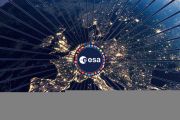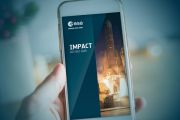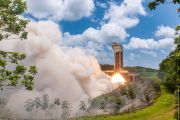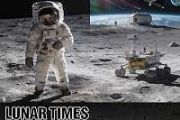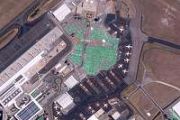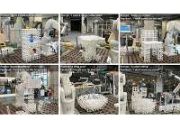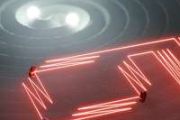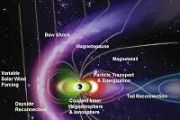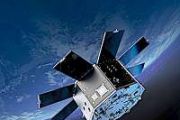
Copernical Team
One-third of galaxy's most common planets could be in habitable zone
 Our familiar, warm, yellow sun is a relative rarity in the Milky Way. By far the most common stars are considerably smaller and cooler, sporting just half the mass of our sun at most. Billions of planets orbit these common dwarf stars in our galaxy.
To capture enough warmth to be habitable, these planets would need to huddle very close to their small stars, which leaves them susceptible to
Our familiar, warm, yellow sun is a relative rarity in the Milky Way. By far the most common stars are considerably smaller and cooler, sporting just half the mass of our sun at most. Billions of planets orbit these common dwarf stars in our galaxy.
To capture enough warmth to be habitable, these planets would need to huddle very close to their small stars, which leaves them susceptible to New study provides novel insights into the cosmic evolution of amino acids
 All biological amino acids on Earth appear exclusively in their left-handed form, but the reason underlying this observation is elusive. Recently, scientists from Japan uncovered new clues about the cosmic origin of this asymmetry. Based on the optical properties of amino acids found on the Murchison meteorite, they conducted physics-based simulations, revealing that the precursors to the biolog
All biological amino acids on Earth appear exclusively in their left-handed form, but the reason underlying this observation is elusive. Recently, scientists from Japan uncovered new clues about the cosmic origin of this asymmetry. Based on the optical properties of amino acids found on the Murchison meteorite, they conducted physics-based simulations, revealing that the precursors to the biolog Quest for alien signals in the heart of the Milky Way takes off
 Akshay Suresh, a graduate student at Cornell University, spearheads an extraordinary scientific endeavor - a groundbreaking mission to uncover periodic signals emanating from the core of the Milky Way called the Breakthrough Listen Investigation for Periodic Spectral Signals (BLIPSS).
Such repetitive patterns could be the key to unlocking the mysteries of extraterrestrial intelligence in o
Akshay Suresh, a graduate student at Cornell University, spearheads an extraordinary scientific endeavor - a groundbreaking mission to uncover periodic signals emanating from the core of the Milky Way called the Breakthrough Listen Investigation for Periodic Spectral Signals (BLIPSS).
Such repetitive patterns could be the key to unlocking the mysteries of extraterrestrial intelligence in o AFRL helps NASA test equipment for Artemis II Mission
 The Air Force Research Laboratory, or AFRL, and NASA worked together over the last two weeks of April 2023 along with other industry partners, such as Lockheed Martin, to test the most current iteration of an astronaut crew seat and flight suit that will be used in the Orion spacecraft during future missions to space.
"NASA came to us actually several years ago, to work with them on develo
The Air Force Research Laboratory, or AFRL, and NASA worked together over the last two weeks of April 2023 along with other industry partners, such as Lockheed Martin, to test the most current iteration of an astronaut crew seat and flight suit that will be used in the Orion spacecraft during future missions to space.
"NASA came to us actually several years ago, to work with them on develo SpaceX Dragon carrying Axiom crew splashes down off coast of Florida
 The SpaceX Dragon spacecraft carrying the Axiom Space Ax-2 crew successfully returned to Earth late Tuesday night, splashing down off the coast of Florida following 10 days in space.
The Ax-2 crew undocked from the International Space Station Tuesday morning to make its 12-hour journey back to Earth, and splashed down at 11:04 p.m. ET in the Gulf of Mexico.
"Splashdown of Dragon confirmed
The SpaceX Dragon spacecraft carrying the Axiom Space Ax-2 crew successfully returned to Earth late Tuesday night, splashing down off the coast of Florida following 10 days in space.
The Ax-2 crew undocked from the International Space Station Tuesday morning to make its 12-hour journey back to Earth, and splashed down at 11:04 p.m. ET in the Gulf of Mexico.
"Splashdown of Dragon confirmed BeetleSat conducts two-way data communication using proprietary expandable antenna
 BeetleSat, formerly NSLComm, a fast-growing satellite technology company building the world's first global low-Earth orbit (LEO) constellation optimized for premium point-to-point communications, has announced the successful software-defined radio (SDR) two-way data communication using its lightweight, very high data rate, expandable antenna.
"Successful data transmission between our satel
BeetleSat, formerly NSLComm, a fast-growing satellite technology company building the world's first global low-Earth orbit (LEO) constellation optimized for premium point-to-point communications, has announced the successful software-defined radio (SDR) two-way data communication using its lightweight, very high data rate, expandable antenna.
"Successful data transmission between our satel China aims to make manned moon landing before 2030
 China plans to send astronauts to the moon before 2030, a space official said on Monday.
Lin Xiqiang, deputy director of the China Manned Space Agency, said at a news conference at the Jiuquan Satellite Launch Center in northwestern China that the country's space authorities have launched the manned lunar program.
"The overall goals are to realize China's first manned landing on the
China plans to send astronauts to the moon before 2030, a space official said on Monday.
Lin Xiqiang, deputy director of the China Manned Space Agency, said at a news conference at the Jiuquan Satellite Launch Center in northwestern China that the country's space authorities have launched the manned lunar program.
"The overall goals are to realize China's first manned landing on the Launch signals wider-opening space sector for China
 Traditionally, China's astronauts are selected from among fighter plane pilots with ample flying experience, as they can control the machinery and have the training to stay calm should an emergency arise in space.
Yet among the three astronauts aboard Shenzhou XVI, which is taking them to Tiangong, China's space station, is Gui Haichao, a professor from Beihang University. He is the first
Traditionally, China's astronauts are selected from among fighter plane pilots with ample flying experience, as they can control the machinery and have the training to stay calm should an emergency arise in space.
Yet among the three astronauts aboard Shenzhou XVI, which is taking them to Tiangong, China's space station, is Gui Haichao, a professor from Beihang University. He is the first Register for ESA’s first Earth observation commercialisation event

Registration is now open for ESA’s first-ever Earth Observation Commercialisation Forum. Taking place at ESA Headquarters in Paris from 30 to 31 October 2023, investors, institutions, entrepreneurs and companies of any size from the Earth observation sector will now be able to come together and discuss the commercial potential and challenges of Earth observation, together with the technical, industrial and risk-capital support available to European companies.
Researchers propose a deep neural network-based 4-quadrant analog sun sensor calibration
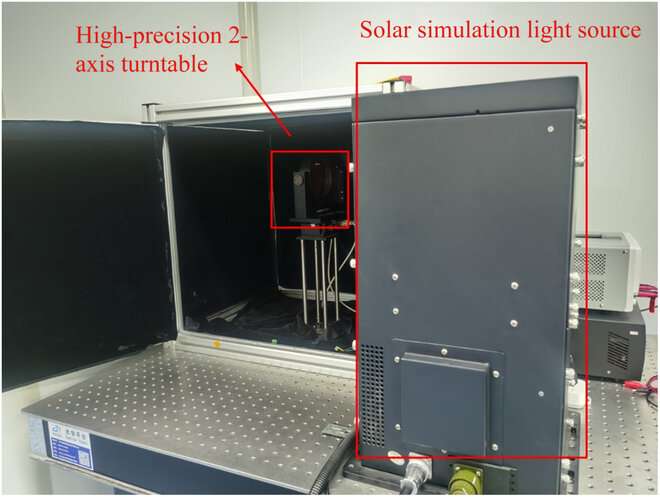
A spacecraft can estimate the attitude state by comparing external measurements from attitude sensors with reference information. CubeSats tend to use 4-quadrant analog solar sensors which have the advantages of extremely low power consumption, minimal volume, low complexity, low cost, and high reliability as attitude sensors, considering the limitation of satellite volume and payload. The performance of the sensor can be importantly improved by the calibration procedure and compensation model.
However, the various error sources affecting the calibration of the 4-quadrant sun sensor lead to a complicated process of compensation model establishment. Deep learning, which is widely used in the aerospace field in recent years, is able to approximate any continuous function on a bounded closed set, providing new ideas for solving the traditional problem.
In a research paper recently published in Space: Science & Technology, authors from Northwestern Polytechnical University, German Aerospace Center, and Dalian University of Technology together propose a method to calibrate sun sensors by deep learning, which not only is able to integrate the influence of various errors but also avoids the need of analyzing and modeling every single error.






